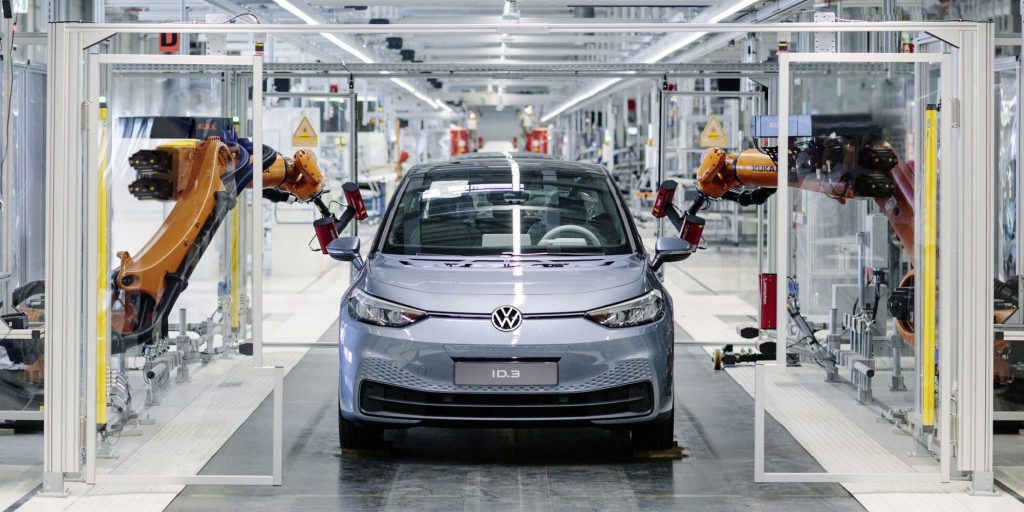
2020 was supposed to be the breakout year for electric vehicles around the globe.
After a serious dent mid-2019 when Beijing cut subsidies, the Chinese EV market, the world’s largest by a country mile, was expected to return to steady growth.
Volkswagen’s affordable ICE killer, the ID3, was forecast to propel Europe into becoming an EV mass market (software problems notwithstanding).
And in the US, Tesla’s Model Y compact SUV was set to convince a new cohort of Americans of the benefits of going electric.
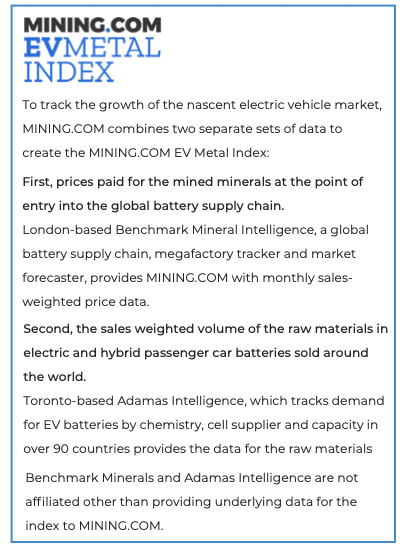
Instead, we have Chinese production down 57% in March and sales down by almost as much, which counts as recovery because over January and February it was down 80% year-on-year.
European car factories may or may not reopen next week, but the industry’s own predictions for 2020 is an annual sales drop of at least 20% for the overall market and lower penetration rates for EVs as new model launches are delayed.
Tesla had a great first quarter partly because it was late in closing down its California plant, but 2020 may well herald a return to overpromise and underdeliver for Musk.
Given this backdrop, the MINING.COM EV Metal Index came off fairly lightly going into 2020 with the value of battery metals in electric cars sold globally reaching $154 million during January and February.
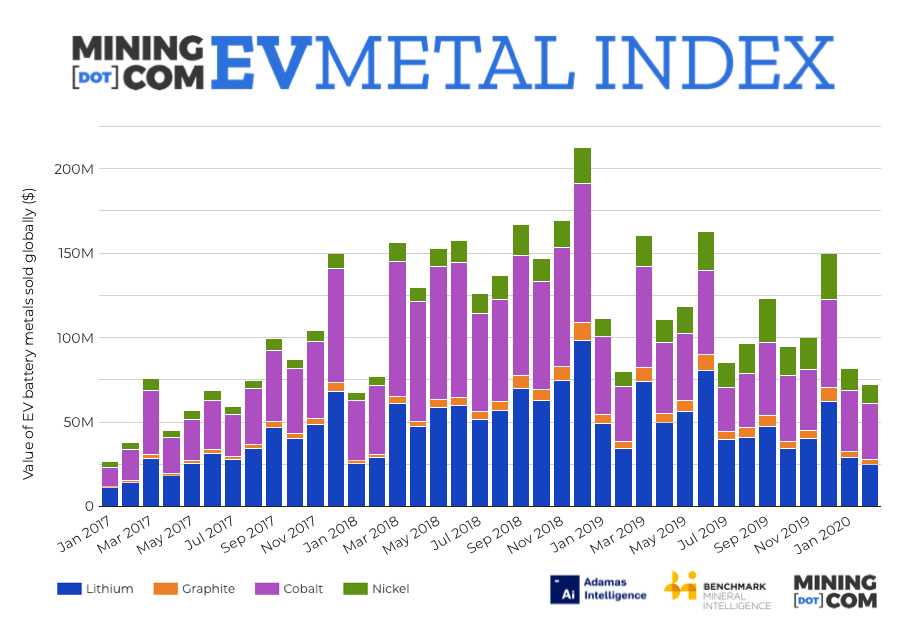
The combined numbers show a 19.1% drop in the index compared to last year. Keep in mind 2019 held the best January and best February in EV industry history.
On a per vehicle basis, the index in fact reached a four month high in February, not only due to a firmer cobalt price, but also a new peak for the average amount of cobalt and lithium used in batteries on a global sales-weighted basis.
Europe electrified
Cobalt and nickel use in the batteries of newly-sold cars got a boost from the fact that European showrooms were still busy early in 2020 (very busy – some estimates put EV sales growth in Q1 at 56%) while China was gearing down for the lunar holiday and then brought to a standstill by the coronavirus outbreak.
European carmakers favour higher energy density, longer-range NCM (nickel-cobalt-manganese) cathodes, which together with Tesla’s NCA (nickel-cobalt-aluminum) account for the vast majority of batteries in passenger EVs.
The continued adoption of nickel-rich cathode chemistries like NCM811 also boosted raw material values per vehicle with the January-February nickel sub-index up 32.1% year-on-year to $24.5 million.
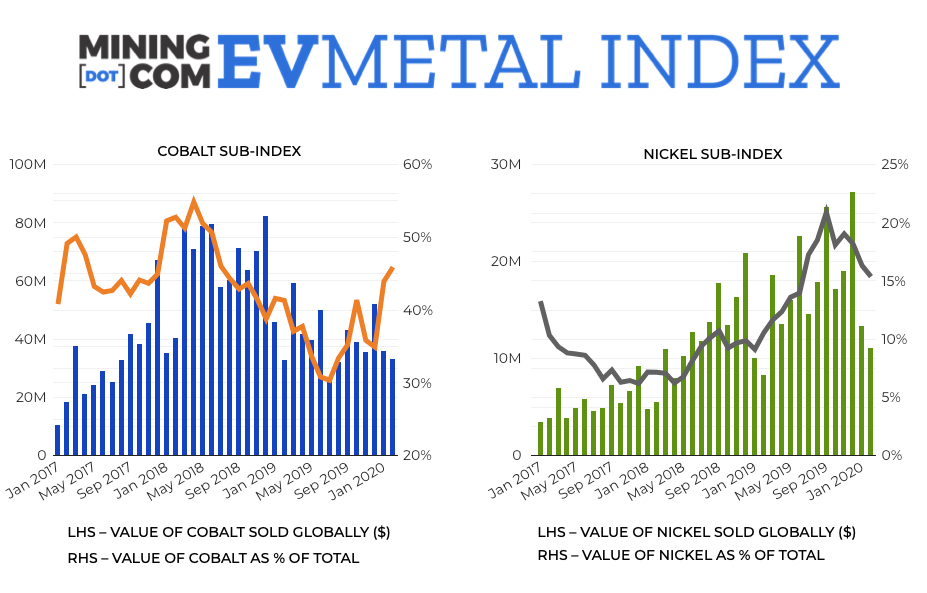
The battery mix is likely to change this year, with LFP (lithium-iron-phosphate) units making a comeback, not least because Tesla has opted for this technology for its Chinese Model 3s where range is less of a concern for motorists.
LFP batteries are significantly cheaper than NCM, but not likely to catch on outside China, meaning market share growth should not come at the expense of cobalt, nickel and manganese demand.
Outlook
Looking ahead, there is still reason for optimism about the EV raw material market in 2020.
EVs may get support from general stimulus measures to revive the world economy, particularly in Germany and China where automanufacture and specifically EVs are a focus of government industrial policy.
On April 1, the Chinese government announced the extension of its state subsidy program for electric vehicles for two years until the end of 2022.
Yesterday the country’s finance ministry announced revisions to the scheme, including higher requirements for minimum driving range which should also boost uptake of NCM technology.
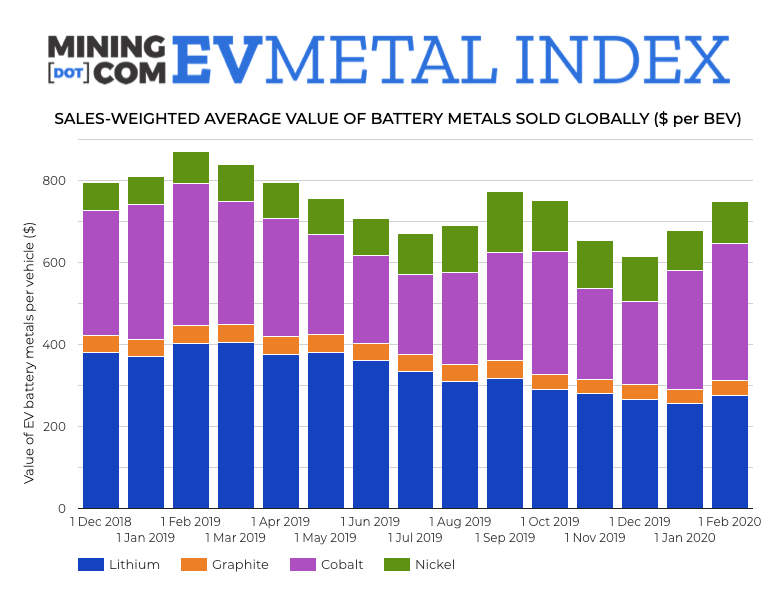
Faced with the potential of $36 billion in fines (95 euros per vehicle for every gram over the emissions limit!) Europe’s carmakers are desperate to push EVs onto consumers.
German marques have made such big bets on going electric that they even opposed the relaxing of the continent’s draconion emissions rules, a request made by the automakers’ association under the cover of covid-19 relief.
The US may stay in the slow lane again.
The US auto industry was lukewarm about the roll-back of auto emissions and fuel efficiency targets by the Trump administration, but gasoline at rock bottom prices have rendered the electric car argument about lower total cost of ownership moot anyway.
But then again, no-one is going to base their cyberpunktruck purchase decision on potential gas savings.
